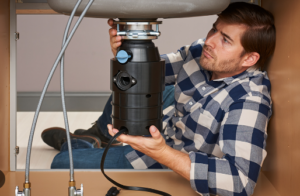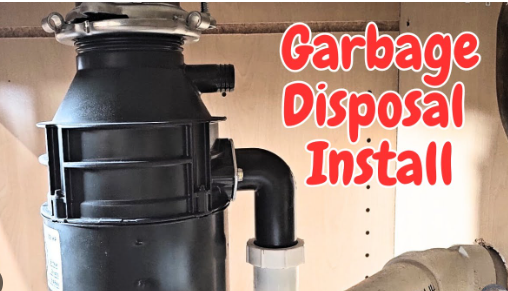A malfunctioning garbage disposal can quickly turn your kitchen into a chaotic mess. But before you rush to call a professional, consider taking matters into your own hands. In this orderly step-by-step guide, we will walk you through the process of diagnosing and repairing common garbage disposal problems, from identifying the issue to completing the fix.
Step 1: Diagnosing the Problem
Before embarking on any repairs, it’s crucial to diagnose the issue accurately. Follow these initial steps to get to the root of the problem:
Listen Actively
Start by turning off the power to your garbage disposal. The power switch is typically located under the sink or in your circuit breaker panel. Next, turn on the disposal and listen carefully for any unusual sounds, such as grinding or humming. These sounds can provide vital clues about the issue at hand.
Check for Blockages
Armed with a flashlight, inspect the disposal chamber for any foreign objects, like utensils or food debris, which may be causing a blockage. This is a common culprit behind disposal problems.
Test the Reset Button: Typically, garbage disposals have a reset button situated at the bottom of the unit. Press it to see if it resolves the issue. If it pops out again, there may be an underlying problem.
Inspect for Leaks
Take a close look for visible leaks around the disposal unit. Any leaks could indicate a seal or pipe issue, which we’ll address later.
Examine the Wiring
Carefully inspect the wiring and connections for any visible damage or loose wires. Electrical issues can also be the source of problems.
Having identified the problem, you can now proceed with the appropriate repair steps.
Step 2: Clearing Blockages
If your garbage disposal is clogged, follow these straightforward steps to clear the blockage and restore functionality:
Use Tongs or Pliers
With the power off, reach into the disposal chamber and carefully remove any visible debris using tongs or pliers.
Utilize the Allen Wrench
Most disposals are equipped with a small Allen wrench. Insert it into the disposal’s bottom and turn it clockwise and counterclockwise a few times to break up and dislodge stubborn clogs.
Reset and Test
After clearing the blockage, press the reset button, and turn the power back on. Run cold water, then activate the disposal to check if it’s functioning correctly. If the problem persists, proceed to the next steps.

Step 3: Repairing a Jammed Garbage Disposal
To add on, if your disposal emits a humming sound but fails to grind, it may be jammed. Here’s how to fix it:
Turn Off PowerEnsure that the power is switched off before you begin repairing a jammed disposal. Safety always comes first.
Locate the Jam
Peer inside the disposal to identify the jam’s source. You may need a flashlight for better visibility.
Use the Allen Wrench
Insert the Allen wrench into the hole at the disposal’s bottom. Gently turn it clockwise and counterclockwise to free the jam. Repeat this process if necessary.
Manually Rotate the Blades
Insert a wooden dowel or broom handle into the disposal and attempt to manually rotate the blades to dislodge any obstructions.
Test the Disposal
Once the jam is cleared, press the reset button and restore the power. Run cold water, and activate the disposal to ensure it’s functioning correctly.
Step 4: Checking for Leaks
Furthermore, leaks around your garbage disposal can lead to water damage and should not be ignored. Follow these steps to check for and rectify leaks:
Inspect the Connections
Examine the connections between the disposal unit and the drain pipe. Tighten any loose connections and replace damaged seals.
Tighten Mounting Bolts
The garbage disposal is usually mounted to the sink with mounting bolts. If you notice wobbling or movement, tighten these bolts to secure the unit in place.
Run Water
Turn on the disposal and let water run for a few minutes to check for any new leaks. If you still detect leaks, it’s advisable to consult a professional plumber.
Conclusion
In conclusion, repairing your garbage disposal is a manageable DIY project that can save you both time and money. By methodically diagnosing and addressing common issues such as blockages, jams, and leaks, you can ensure your kitchen stays functional and stress-free.
Always remember to prioritize safety by turning off the power before attempting any repairs. If you encounter a problem beyond your DIY capabilities or feel uncertain about the process, seek professional assistance promptly. Moreover, maintaining a well-functioning garbage disposal is essential for the smooth operation of your kitchen.



